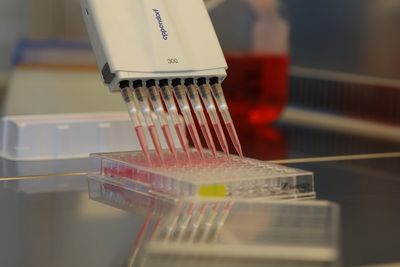Cell-based Assays
Aberrant angiogenesis is a common feature found in a number of retinal diseases, such as neovascular age-related macular degeneration (nAMD), proliferative diabetic retinopathy (PDR), neovascular glaucoma or the autosomal dominant Sorsby Fundus Dystrophy (SFD). To investigate angiogenesis in vitro we use various assays, e.g. the so called tube formation assay (TFA) or the scratch wound healing assay (SWHA). Mouse and human cell systems can be applied to these assays. While TFA and SWHA only reflect a 2D situation, the sprouting assay (SA) with murine or porcine choroid tissue allows the study of angiogenetic processes in a 3D environment.
A major aspect of research at our Institute concentrates on retinal pigment epithelium (RPE) cells and their functional impairment in retinal dystrophies. For example, we are examining the phagocytosis of photoreceptor outer segments (POS) by feeding porcine POS to cultured RPE cells differentiated from patient-derived induced pluripotent stem cell lines (hiPSC-RPE). In another area of research we are interested how and to what extend Bestrophin 1 (BEST1) channel function is impaired if the channel harbors disease associated mutations. To address this we established a Yellow Fluorescent Protein (YFP)-based assay, which can even be scaled to a high-throughput format allowing the search for potential compounds on the way to identify novel medical treatments.

